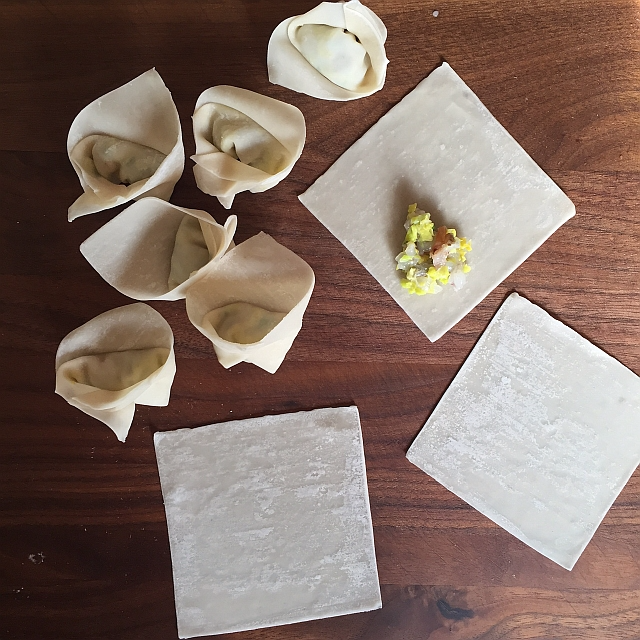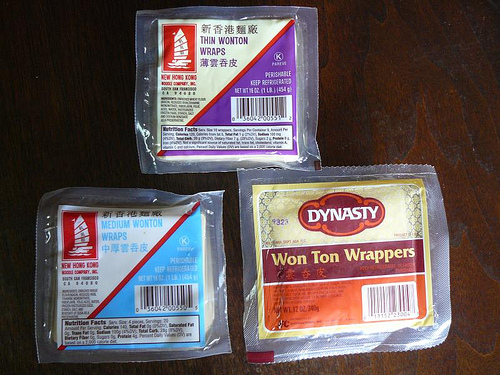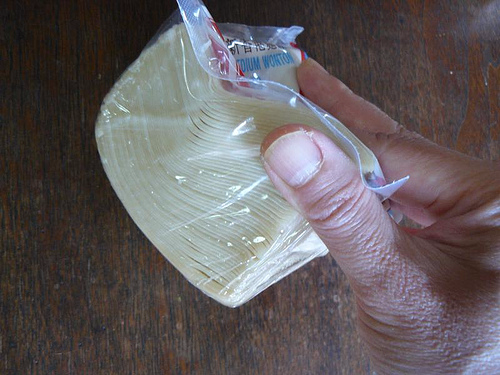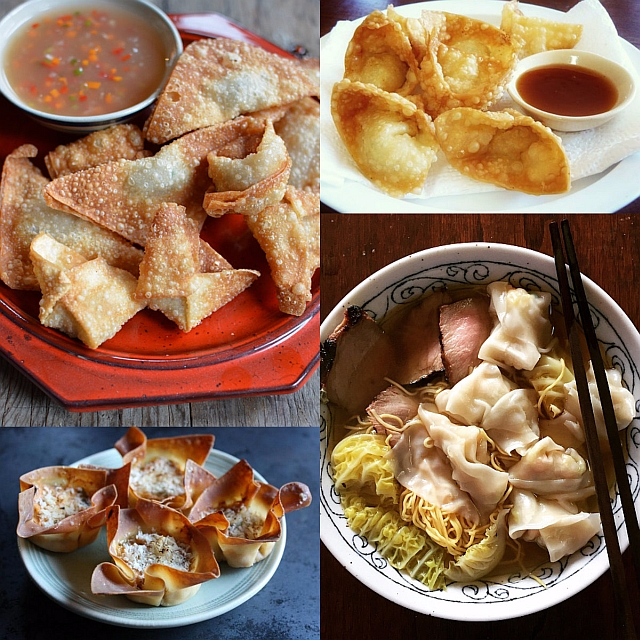The first dumplings I ever made were wontons. I reckon that there were also among the first dumplings that I ate too. Wontons are Chinese in origin and they are super popular in the Vietnamese kitchen, where they’re called hoanh thanh. My family often fried them for a party appetizer. My mom makes wontons in broth for my nieces and nephews. I like to fry wontons for a TGIF snack with drinks to celebrate the end of the week.
Wontons seeded my love and appreciation for Asian dumplings. I didn’t participate in afternoon sports or other activities because they were costly and foreign to my parents. Instead I did homework, watched TV, and learned to sew, knit, crochet, and cook. Among the domestic skills, cooking was the one that stuck with me through my entire life (I can hem pants and that’s it). I folded 2 or 3 packs of wonton wrappers at a time. My mom would make the filling and hand me the skins. It was tedious at times, but then I got crafty with them and it became fun. Plus I got to eat them. I became a wonton expert through practice and consuming wontons. (They fry fast so my mom didn’t let me deep fry them as a elementary school kid.)
I’ve made wonton skins from scratch using a pasta machine and they’re spectacular. If you have time, a detailed recipe and instructions are in Asian Dumplings on page 64. When you make them yourself, you understand why they’re called skins – they are silky and supple like beautiful skin. Incredible and they’re simply made with flour, salt, water, egg, and cornstarch! A fried wonton made from DIY wrappers is seriously ethereal. It cooks up to a delicate crispness.
But I often buy wontons wrappers too. Have no shame if you’re in the same boat. What’s important is being an informed, smart wonton skin shopper and user. I hope that this post will up your dumpling game. Feel free to add your tips too.
How to Buy Wonton Wrappers
What is a wonton wrapper? It’s a given to many but not understood by all that a wonton skin is just a very thin sheath of dough that envelopes the dumpling filling! Wonton wrappers are made like Italian pasta, only with less egg and lots of cornstarch to promote stretch-ability and a delicate, thin finish. Wonton wrappers (also called skins) are square shape and roughly 3-inches (7.5 cm wide. They are not round dumpling wrappers that you’d use for pot stickers or steamed siu mai.
Where to shop: Good pre-made wonton skins are sold at Chinese and Southeast Asian markets. There is usually a fast turnover rate and they have a bigger selection. There are decent wonton skins at supermarkets. Dynasty, made by JFC (an Asian company), is actually quite good. Some grocers carry Azumaya but I’ve consistently found that they are dry, thick, and difficult to work with. Nasoya brand is thinner and more supple than Azumaya. Go for Nasoya.
Where to look: At an Asian market, wonton wrappers are in chiller cases near fresh egg and rice noodles, dried shrimp, and tofu. At a regular supermarket, look for them in a chiller case, sometimes with other Asian ingredients such as tofu and tempeh. Sometimes, wonton wrappers are sold in the freezer. Ask a store clerk for help. I do all the time.
Pick your thickness. Wonton skins come in different thicknesses. I’ve seen thin, medium, and thick. Then there’s also super thin Hong Kong-style and eggless Shanghai-style skins that are pure white. I like thin ones, but medium is okay. Thick wonton skins produce an overly doughy result that can overwhelm the filling. Eggless wonton skins are great for vegans but lack a bit of richness. Supermarket brands are in the main, medium-thin. You won’t have a choice so trust your market.
Examine the ingredients. Aim for skins with egg and no food coloring. Read the label. Frozen eggs are better than no egg at all, in my opinion. Manufactures add food coloring to mimic the use of real eggs. My homemade wonton skins do not have a yellow cast.
Do a Freshness Test. After determining the wonton skins thickness, run your fingers on the stack and if they fall nicely like a ream of paper, they they’re fresh and supple. If they don’t move, look at the corner: Can you make out each wrapper’s edge? If they are smashed together and damp looking, you don’t want that package.
How to Use Wonton Wrappers
Use water to seal. People in the past used egg and I think it’s because their skins may have been very dry or on the thick side, thus requiring extra “glue”. Also, egg is used with spring roll skins (an oversized wonton skin) for sealing and people may think that delicate little wontons need the same treatment. They don’t. When working with wonton skins, water works just fine to seal. Put some in a small dish and use a brush or the tip of a chopstick, depending on your shape (see the video below).
How to shape wontons. There are endless shapes to make and you can create your own. This video tutorial I made with Chow.com will get you started:
Freeze leftover skins. One package can have 40 to 50 wrappers. Unless you’re like my mom and feeding a crowd, you’re likely not going to make that many. Unused wontons wrappers can be refrigerated for about 1 week (more wontons!), or frozen for up to 1 month.
Freeze shaped wontons. Once filled, set the uncooked wonton on a baking sheet lined with parchment paper and sprinkled with cornstarch or flour. Slide it into the freezer and once the wontons are hard, transfer them to an airtight container and keep for up to 1 month. Partially thaw the wontons before cooking them in broth. Fried wontons are best done with freshly shaped wontons (which you can keep chilled for hours before cooking).
Using wonton wrappers for other dumplings and dishes. Wonton skins are a good substitute for steamed open face sui mai dumplings. Use a round cookie cutter to stamp out round skins. BUT, wonton skins are not great for pot stickers as the skins are too delicate. Pot stickers need some chew to them to reflect their wonderful rusticity. You may cut wonton skins and fry them for classic Chinese chicken salad.
Wonton Recipes to Try
I’ve written a lot of wonton recipes in my published books. If you have Into the Vietnamese Kitchen, look for the fried wonton recipe on page 38 and wonton noodle soup recipe on page 222. In Asian Dumplings, the “Thin Skin” chapter includes a master recipe for wontons (page 64), as well as fried wontons (page 69), shrimp wonton soup (page 70), and vegetable and pork wontons in spicy oil (page 72). You can also re-purpose wonton skins for siu mai on page 77 too! In Asian Tofu, the vegan wontons in chile oil (page 172) are always a surprising hit with omnivores.
On this site, you’ll find:
- Crab Rangoon (based on the original Trader Vic’s recipe)
- Gratitude Fried Wontons (what my family made in the 1970s)
- Classic Chinese Chicken Salad (re-purpose unused wonton skins)
- Deviled Sriracha Crab Rangoon (baked not fried)
Got a wonton tip or question? Share them here.
More DIY dumpling tips:





















